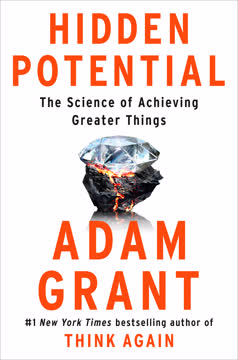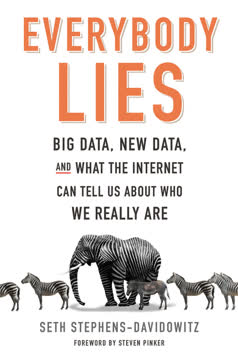Key Takeaways
1. Choice Architecture Shapes Decisions: Design Environments for Better Outcomes
"Choice architecture affects outcomes, but it need not be in any sense paternalistic."
Choice architecture is ubiquitous. Every decision we make is influenced by the way options are presented to us, whether we realize it or not. This includes everything from the layout of a grocery store to the design of government forms. Good choice architecture can make it easier for people to make decisions that benefit themselves and society.
Small changes can have big impacts. Simple adjustments to choice architecture can lead to significant changes in behavior:
- Placing healthier foods at eye level in cafeterias increases their selection
- Automatically enrolling employees in savings plans boosts retirement savings
- Using opt-out instead of opt-in policies for organ donation increases donor rates
By understanding how people actually make decisions, rather than how we think they should, we can design environments that nudge people towards better choices while still preserving their freedom to choose.
2. Simplify Government: Streamline Regulations and Reduce Complexity
"Government itself must get simpler."
Complexity is costly. Overly complex regulations and procedures create unnecessary burdens for businesses and individuals. They can lead to confusion, non-compliance, and wasted time and resources. Simplification can yield significant benefits:
- Reduced paperwork and administrative costs
- Increased compliance with important rules
- Better public understanding of government policies
Strategies for simplification:
- Use plain language in all government communications
- Eliminate redundant or outdated regulations
- Streamline forms and application processes
- Leverage technology to automate and simplify interactions
The goal should be to make government processes as intuitive and user-friendly as possible, much like well-designed consumer products. This not only benefits citizens but also improves government efficiency and effectiveness.
3. Nudges: Influence Choices While Preserving Freedom
"Nudges represent soft paternalism, because they do not impose material costs on people's choices."
Nudges are powerful tools. They can steer people towards better decisions without restricting choice or imposing significant costs. Examples include:
- Default enrollment in retirement savings plans
- Placing healthier food options in prominent cafeteria locations
- Sending reminders for important appointments or deadlines
Ethical considerations are important. While nudges can be highly effective, they must be used responsibly:
- Transparency: The use of nudges should be disclosed and explained
- Beneficence: Nudges should be designed to benefit the individual being nudged
- Easy reversibility: It should be simple for people to opt out or choose differently
When designed and implemented thoughtfully, nudges can help people overcome cognitive biases and make choices more aligned with their long-term interests, all while preserving individual autonomy.
4. Disclosure Matters: Make Information Clear, Simple, and Actionable
"Plate, not Pyramid."
Effective disclosure is crucial. Simply providing information is not enough; it must be presented in a way that people can easily understand and use. The "Food Plate" replacing the "Food Pyramid" is a prime example of how simplifying and clarifying information presentation can dramatically improve its effectiveness.
Key principles for effective disclosure:
- Simplicity: Use plain language and avoid jargon
- Salience: Highlight the most important information
- Comparability: Enable easy comparison between options
- Actionability: Make it clear what steps people can take
Examples of improved disclosure:
- Energy efficiency labels on appliances
- Nutrition facts labels on food products
- Simplified mortgage disclosure forms
By making information more accessible and understandable, we empower people to make better-informed decisions across all areas of life, from health to finance to consumer choices.
5. Default Rules Have Powerful Effects: Choose Wisely
"Default rules are pervasive, even when we do not notice them, and they have major effects on outcomes."
Defaults shape behavior. Due to inertia, cognitive biases, and implied endorsement, people tend to stick with pre-selected options. This makes default rules extremely powerful:
- Automatic enrollment in retirement savings plans can dramatically increase participation rates
- Opt-out organ donation policies lead to much higher donor rates than opt-in policies
- Default privacy settings on websites and apps significantly influence user data sharing
Choosing defaults requires care. Given their impact, default rules should be selected thoughtfully:
- Consider the welfare of those affected
- Aim to align with what most informed people would choose
- Allow for easy opt-out when appropriate
- Use personalized defaults when possible to better match individual needs
By leveraging the power of defaults, policymakers and choice architects can guide people towards better outcomes while still preserving freedom of choice.
6. Social Influences Shape Behavior: Leverage Norms for Positive Change
"Because of social influences, the success of cultural products is highly unpredictable."
Social proof is powerful. People are heavily influenced by the perceived choices and opinions of others. This can lead to:
- Information cascades, where initial choices have outsized influence
- Conformity to social norms, even when they conflict with personal preferences
- Rapid spread of behaviors, both positive and negative
Harnessing social influence for good:
- Use descriptive norms to encourage positive behaviors (e.g., "Most people in your neighborhood recycle")
- Highlight the actions of respected individuals or groups
- Create opportunities for people to publicly commit to desired behaviors
By understanding and leveraging social influences, we can design interventions that tap into our natural tendency to follow others, steering behavior towards more positive outcomes for individuals and society.
7. Cost-Benefit Analysis: A Vital Tool for Smarter Regulation
"Cost-benefit analysis is, in a sense, a foreign language, and it works for that reason."
Rigorous analysis improves decision-making. Cost-benefit analysis (CBA) provides a structured approach to evaluating policies and regulations:
- Quantifies both positive and negative impacts
- Enables comparison of different policy options
- Helps identify unintended consequences
CBA is not perfect, but valuable. While there are challenges in quantifying certain impacts, CBA offers several benefits:
- Promotes evidence-based policymaking
- Increases transparency in decision-making
- Helps counteract cognitive biases and political pressures
By treating CBA as a "foreign language" that forces careful consideration, policymakers can make more rational, effective decisions that maximize societal benefits while minimizing costs.
8. Retrospective Review: Continuously Improve Existing Rules
"What is needed is a genuine culture of retrospective analysis, in which agencies stand ready and willing to improve and simplify rules completed decades ago, or years ago, or months ago, or even weeks ago."
Ongoing evaluation is crucial. Regulations should not be static; they need to be regularly reviewed and updated:
- Assess actual impacts compared to predicted effects
- Identify unintended consequences
- Find opportunities for simplification or improvement
Strategies for effective retrospective review:
- Set clear metrics for success when implementing new rules
- Establish regular review cycles for existing regulations
- Engage stakeholders to gather feedback on rule effectiveness
- Use pilot programs and randomized controlled trials when possible
By embracing a culture of continuous improvement, government can ensure that regulations remain effective, efficient, and responsive to changing circumstances.
9. Behavioral Insights: Understanding Human Decision-Making is Key
"We are Homo sapiens, not Homo economicus."
People are not purely rational. Traditional economic models often fail to account for the realities of human behavior:
- Cognitive biases influence our decisions (e.g., loss aversion, present bias)
- Emotions play a significant role in choice-making
- Social influences shape our preferences and actions
Applying behavioral insights:
- Design policies that account for how people actually behave, not how we think they should
- Use "choice architecture" to guide people towards better decisions
- Test interventions using randomized controlled trials to measure real-world impacts
By incorporating behavioral science into policymaking, we can create more effective, human-centered regulations and programs that achieve their intended goals while respecting individual autonomy.
10. Balance Paternalism and Autonomy: Nudge Responsibly
"No sensible person wholeheartedly embraces government paternalism."
Tension exists between helping and overreaching. While nudges and choice architecture can lead to better outcomes, there are valid concerns about government overreach and manipulation.
Key principles for responsible nudging:
- Transparency: Be open about the use of nudges and their intended effects
- Welfare-promotion: Design nudges to benefit those being influenced
- Freedom of choice: Ensure that people can easily opt out or choose differently
- Evidence-based: Use rigorous testing to verify effectiveness and lack of harm
By adhering to these principles, policymakers can harness the power of behavioral insights to improve people's lives while respecting individual autonomy and avoiding the pitfalls of heavy-handed paternalism.
Last updated:
FAQ
What's Simpler: The Future of Government about?
- Focus on Simplicity: The book explores how governments can enhance their effectiveness by simplifying processes and reducing unnecessary complexity in regulations.
- Behavioral Economics Influence: It highlights the role of behavioral economics in understanding decision-making and how this can inform better government policies.
- Practical Examples: Cass R. Sunstein shares real-world examples from his tenure at the Office of Information and Regulatory Affairs to illustrate successful simplification efforts.
Why should I read Simpler: The Future of Government?
- Insightful Perspective: Gain a unique insider's view of regulatory processes and the challenges of implementing effective government policies.
- Actionable Strategies: Discover practical strategies for simplifying government operations, applicable in various sectors, including private organizations.
- Relevance to Current Issues: The themes of simplification and effective governance are highly pertinent in today's complex political and economic landscape.
What are the key takeaways of Simpler: The Future of Government?
- Simplicity is Key: Simplifying government processes can lead to better outcomes for citizens and more efficient resource use.
- Nudges and Choice Architecture: Introduces "nudges," subtle policy shifts that encourage better decision-making without restricting freedom of choice.
- Importance of Transparency: Emphasizes the need for clear communication and transparency in government to enhance public understanding and compliance.
What are the best quotes from Simpler: The Future of Government and what do they mean?
- “Simplicity is friendly, and complexity is not.”: Highlights that simpler government processes lead to better citizen engagement and satisfaction.
- “Nudges consist of approaches that do not force anyone to do anything and that maintain freedom of choice.”: Underlines the effectiveness of nudges in promoting positive behavior without infringing on individual liberties.
- “The future of government lies in fewer rules and more discretion.”: Suggests that a more flexible regulatory environment can lead to better outcomes by allowing for creativity and adaptability.
How does Simpler: The Future of Government define "nudges"?
- Behavioral Economics Tool: Nudges are subtle policy shifts that influence decisions to improve well-being while preserving freedom of choice.
- Examples of Nudges: Includes automatic enrollment in retirement plans and clear labeling on food products to guide consumer choices.
- Effectiveness of Nudges: Argues that nudges can lead to significant improvements in public health, safety, and economic outcomes without coercive measures.
What is "choice architecture" in the context of Simpler: The Future of Government?
- Designing Decision Environments: Refers to how choices are presented, significantly influencing decisions and behaviors.
- Impact on Behavior: Illustrates how small changes in option presentation can lead to better decision-making, like placing healthier food options at eye level.
- Importance of Salience: Emphasizes that making certain choices more noticeable can help people make better decisions.
How does Simpler: The Future of Government address the issue of complexity in government regulations?
- Reducing Red Tape: Discusses initiatives aimed at eliminating unnecessary regulations and simplifying existing ones for easier compliance.
- Empirical Foundations: Advocates for a data-driven approach to regulation, where decisions are based on evidence rather than intuition or political pressure.
- Retrospective Review: Highlights the importance of regularly reviewing existing regulations to assess their effectiveness and eliminate outdated or burdensome ones.
What role does cost-benefit analysis play in Simpler: The Future of Government?
- Framework for Decision-Making: Essential for evaluating the effectiveness of regulations, helping assess if benefits justify costs.
- Empirical Evidence: Emphasizes the need for data and randomized controlled trials to inform cost-benefit analyses.
- Regulatory Lookback: Introduces a process where existing regulations are periodically reviewed to determine their effectiveness, relying on cost-benefit analysis.
How does Simpler: The Future of Government suggest improving government operations?
- Streamlining Regulations: Advocates for simplifying regulations to reduce complexity and improve compliance.
- Enhancing Public Participation: Emphasizes involving the public in the regulatory process to lead to better-informed policies and greater accountability.
- Utilizing Behavioral Insights: Encourages integrating behavioral insights into government practices to design more effective regulations.
What examples of successful simplification does Simpler: The Future of Government provide?
- Fuel Economy Labels: Redesign made it easier for consumers to understand fuel efficiency costs, leading to better purchasing decisions.
- School Lunch Programs: Automatic enrollment of eligible children significantly increased participation rates.
- Health Care Transparency: The Affordable Care Act's clear disclosure of health insurance options simplified complex information for consumers.
How does Simpler: The Future of Government propose addressing childhood obesity?
- Promoting Healthy Eating: Discusses initiatives like the “Let’s Move” campaign to encourage healthier eating habits among children.
- Using Nudges in Schools: Highlights the effectiveness of nudges, such as placing fruits and vegetables at the front of lunch lines.
- Engaging Parents and Communities: Advocates for involving parents and communities to create supportive environments for healthier lifestyles.
What challenges does Simpler: The Future of Government identify in predicting political change?
- Unpredictability of Social Influences: Discusses how social dynamics can lead to unexpected political outcomes, citing examples like the Arab Spring.
- Information Cascades: Explains how individuals following others' actions can lead to rapid shifts in public opinion and behavior.
- Reputation and Social Pressure: Highlights the role of reputation in driving political change, as social norms shift and individuals conform to new behaviors.
Review Summary
Simpler receives mixed reviews, with an average rating of 3.57/5. Readers appreciate Sunstein's insights on applying behavioral economics to government regulations and his efforts to simplify processes. Many find the book informative and well-written, praising Sunstein's storytelling and examples. However, some criticize it for being repetitive, dry, and lacking novelty, especially for those familiar with his previous work. Several reviewers note that the book could have been shorter and more focused. Overall, it's seen as a valuable read for those interested in government regulation and policy-making.
Similar Books










Download PDF
Download EPUB
.epub digital book format is ideal for reading ebooks on phones, tablets, and e-readers.












